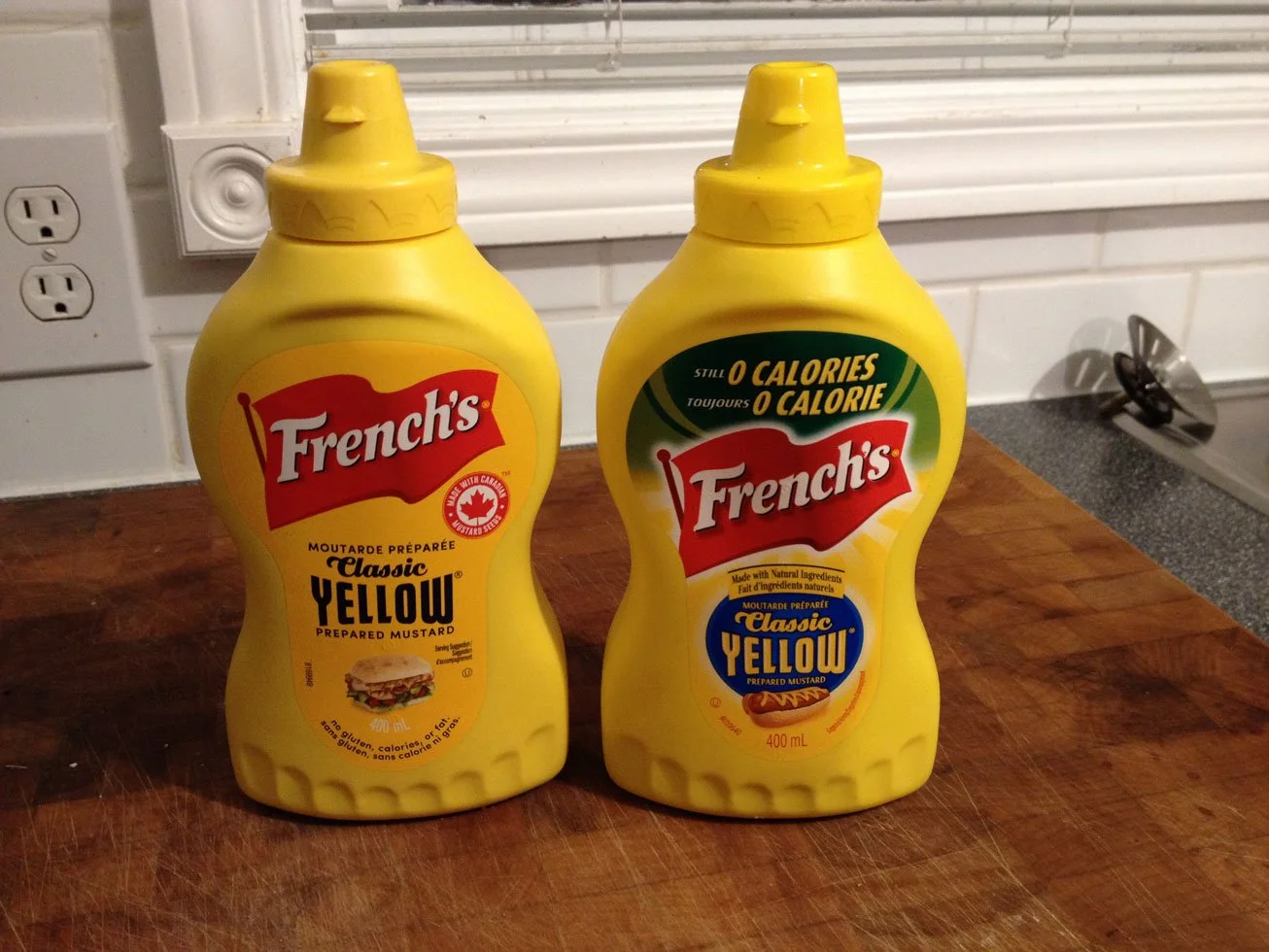A/B Testing
There’s a scene in the movie Glengarry Glen Ross where Alec Baldwin’s character, Blake, says that his sales team should follow the ABCs: A - Always, B - be, C - closing. Whether that is true or not I think most people should be practicing their ABTs: A - Always, B - be, T - testing.
What Is An A/B Test?
A couple of years ago at the grocery store, I bought two separate containers of French's Mustard just because of the packaging.
French's Mustard is the #1 selling brand of mustard in the US, in fact, its sales are more than DOUBLE that of its nearest mustard competitor. Still, just because you're number one doesn't mean you can stop testing and improving.
French’s Mustard A/B Testing To Grow Their Market Share
These two containers have exactly the same mustard inside of them, but French's is continuing to test to improve their sales. Note the strong "0 calories" messaging on the bottle on the right - the small print says “STILL” because mustard has always had zero calories (it's just mustard seed and vinegar).
If you look closely at the label on the left, you’ll see that it includes copy stating “no gluten, calories, or fat” because gluten-free and fat-free products are appealing to today’s shoppers as well.
Some may feel that a label change would not be worth testing if the product is already a good seller, but a label can have an immense impact on consumers. In Malcolm Gladwell’s book Blink, he details accounts of how adding more yellow to the 7Up label made focus groups taste ‘more lemon’ in the drink, and how adding a sprig of parsley to the Hormel logo helped consumers feel the product was 'fresher’.
A/B testing is useful for much more than marketing too. You could be testing if coffee or tea provides you with more energy in the morning, which pillow helps you get better sleep, or if free morning donuts or an additional vacation day improves your staff morale more. Whatever tests you have in mind, here are a few simple tips to help you get the most from them:
Rules For Running Your Own A/B Tests
An A/B test is a science experiment. Start with a hypothesis and a way to measure your results.
Only change 1 variable at a time. If you’re changing the label, don’t change the size, shelf placement, or product. Don’t change your marketing spending or campaign messaging. One. Thing. At. A. Time.
You have to be truthful. If this test is a marketing test, don’t make things up to see how they are received.
Take your time. Let the test run for longer than you think you should. Collect a lot of data.
Be willing to be wrong. You learn more from your mistakes than your wins. If you’re testing to find a chair that relieves your back pain and you discover the $250 office chair from Staples is more comfortable than your $1200 Aeron chair, so be it.
Keep it up. At the end of your test commit to the results and then test something else. Have fun.
What could you A/B test in your life to improve your happiness or health? What one change could you make to a product you sell that might increase sales?

